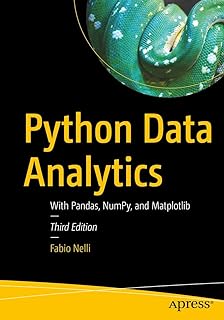
Reinforcement Learning is a machine learning paradigm in which an agent learns to make sequential decisions by interacting with an environment. Unlike Supervised Learning, there are no labeled input/output pairs for training. Instead, the agent learns to perform actions through trial and error, receiving a reward or punishment signal based on her actions.
[wpda_org_chart tree_id=20 theme_id=50]
Reinforcement Learning
In the vast landscape of Machine Learning, Reinforcement Learning emerges as a dynamic force that goes beyond the traditional paradigm of supervised and unsupervised learning. Imagine an intelligent agent immersed in an environment, constantly making decisions to maximize future rewards. This is the epitome of Reinforcement Learning (RL), a fascinating field that has captured the imagination of AI researchers and enthusiasts.
Unlike supervised learning, where a model is trained on a labeled dataset, and unsupervised learning, which explores intrinsic relationships between unlabeled data, Reinforcement Learning focuses on agent-environment interaction. An agent, equipped with decision-making skills, learns to act in a complex environment through trial and error, driven by the relentless pursuit of maximizing cumulative rewards.
The beating heart of Reinforcement Learning lies in the agent’s ability to learn optimal strategies to face the challenges posed by the environment. This results in a deep understanding of cause-effect dynamics, allowing the agent to make not only reactive, but proactive decisions. This feature makes RL particularly suitable for scenarios where adaptability and the ability to learn from past experiences are key.
Reinforcement Learning is based on three fundamental elements:
- Agent: The entity that makes decisions and learns from interactions with the environment.
- Environment: The context in which the agent operates and interacts.
- Actions: The choices available to the agent in making decisions in the environment.
The agent’s goal is to maximize the sum of rewards received over time. This requires an action strategy that takes into account immediate and future rewards. Reinforcement Learning can be formalized through a Markov Decision Process (MDP), a model that describes the dynamics of sequential decisions in which the agent’s actions influence the future state of the environment. The agent receives reward or punishment signals based on her actions. The goal is to learn how to maximize total rewards over the long term. The agent must balance exploring new actions to discover better rewards with exploiting known actions that led to positive rewards.
Here are some algorithms that make use of Reinforcement Learning:
- Q-Learning
- Deep Q Networks (DQN),
- Policy Gradient Methods
Furthermore there is the concept of Replay Buffer. In deep learning, agents can use replay buffers to retain and replay past experiences, improving learning efficiency.
Reinforcement Learning is known for its applications where the agent must learn to make decisions in complex and dynamic environments, often exceeding human capabilities in complex games or advanced control situations. Learning through trial and error and the ability to manage the trade-off between exploration and exploitation are key aspects of Reinforcement Learning.

Suggested book:
Concepts and considerations related to Reinforcement Learning
Reinforcement Learning is based on complex systems and models on which general considerations can however be made.
Complexity of Actions and States
In Reinforcement Learning, the complexity of actions and states can vary greatly. In some applications, actions may be discrete and easily interpretable, while in others, such as robotics, actions may be continuous and require finer control. Managing complex action and state spaces is a major challenge.
Trade-Off between Exploration and Exploitation
The balance between exploration and exploitation is a critical consideration. If an agent focuses too much on exploration, he can spend a lot of time trying random actions and not taking advantage of the knowledge gained. On the other hand, if he exploits too much, he may not discover new profitable strategies.
Continuous Learning and Adaptation
Reinforcement learning can involve continuous learning and adaptation to changing dynamics of the environment. Agents must be able to update their strategies based on new information and changes in conditions.
Assigned Credit Problem
The assigned credit problem refers to the difficulty of correctly attributing rewards or punishments to specific actions when an agent performs a sequence of actions. Understanding which action contributed most to a positive or negative outcome is a key challenge.

If you want to delve deeper into the topic and discover more about the world of Data Science with Python, I recommend you read my book:
Fabio Nelli
Evaluation and Deep Learning Functions
Evaluation functions, such as Q or V functions, can be learned through the use of deep learning techniques. Integrating deep learning opens up new opportunities, but also requires careful attention to training stability and managing overfitting.
Computation and Time Requirements
Applying Reinforcement Learning can require significant computational resources and time, especially when using complex algorithms or deep neural models. Scalability is critical when tackling real-world problems.
Ethics and Bias
As with any form of machine learning, Reinforcement Learning raises ethical questions, especially when agents interact with humans or make decisions that can have significant impacts on society. Bias management and ethical responsibility are crucial aspects to consider.
Ultimately, Reinforcement Learning is a fascinating and ever-evolving field, with unique challenges and opportunities. Its application varies from game scenarios to real-world contexts, and its ability to learn optimal behaviors in dynamic contexts offers potential advantages in many areas.